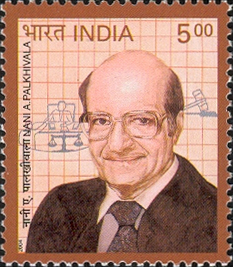
The Supreme Court of India is the supreme judicial authority and the highest court of the Republic of India. It is the final court of appeal for all civil and criminal cases in India. It also has the power of judicial review. The Supreme Court, which consists of the Chief Justice of India and a maximum of fellow 33 judges, has extensive powers in the form of original, appellate and advisory jurisdictions.

The Fundamental Rights, Directive Principles of State Policy and Fundamental Duties' are sections of the Constitution of India that prescribe the fundamental obligations of the states to its citizens and the duties and the rights of the citizens to the State. These sections are considered vital elements of the constitution, which was developed between 1949 by the Constituent Assembly of India.

The Constitution of the Republic of Singapore is the supreme law of Singapore. A written constitution, the text which took effect on 9 August 1965 is derived from the Constitution of the State of Singapore 1963, provisions of the Federal Constitution of Malaysia made applicable to Singapore by the Republic of Singapore Independence Act 1965, and the Republic of Singapore Independence Act itself. The text of the Constitution is one of the legally binding sources of constitutional law in Singapore, the others being judicial interpretations of the Constitution, and certain other statutes. Non-binding sources are influences on constitutional law such as soft law, constitutional conventions, and public international law.

Nanabhoy "Nani" Ardeshir Palkhivala was an Indian lawyer and jurist. Being lead counsel in cases such as Kesavananda Bharati v. The State of Kerala, I.C. Golaknath and Ors. v. State of Punjab and Anrs., Minerva Mills v. Union of India garnered him international recognition and cemented his reputation as one of India’s most eminent advocates.
The basic structure doctrine is a common law legal doctrine that the constitution of a sovereign state has certain characteristics that cannot be erased by its legislature. The doctrine is recognised in India, Bangladesh, Pakistan, and Uganda. It was developed by the Supreme Court of India in a series of constitutional law cases in the 1960s and 1970s that culminated in Kesavananda Bharati v. State of Kerala, where the doctrine was formally adopted. Bangladesh is perhaps the only legal system in the world which recognizes this doctrine with an expressed, written and rigid constitutional manner through article 7B of its Constitution.
The Thirty-ninth Amendment of the Constitution of India, enacted on 10 August 1975, placed the election of the President, the Vice President, the Prime Minister and the Speaker of the Lok Sabha beyond the scrutiny of the Indian courts. It was passed during the Emergency of 1975–1977. It was moved by the Congress government headed by Indira Gandhi to preempt a hearing by Supreme Court of India concerning the setting aside of Gandhi's election by the Allahabad High Court on the grounds of corrupt electoral practices.

Hans Raj Khanna was an Indian judge, jurist and advocate who propounded the basic structure doctrine in 1973 and attempted to uphold civil liberties during the time of Emergency in India in a lone dissenting judgement in 1976. He entered the Indian judiciary in 1952 as an Additional District and Sessions Judge and subsequently was elevated as a judge to the Supreme Court of India in 1971 where he continued till his resignation in 1977.

The 42nd amendment, officially known as The Constitution Act, 1976, was enacted during the Emergency by the Indian National Congress government headed by Indira Gandhi.

The Preamble to the Constitution of India presents the principles of the Constitution and indicates the sources of its authority. It was adopted on 26 November 1949 by the Constituent Assembly and came into effect on 26 January 1950, celebrated as the Republic Day of India. It was amended during the Indian emergency by Indira Gandhi where the words "socialist", "secular" and "integrity" were added.

Koka Subba Rao was the ninth Chief Justice of India (1966–1967). He also served as the Chief Justice of the Andhra Pradesh High Court.

The Twenty-fifth Amendment of the Constitution of India, officially known as The Constitution Act, 1971, curtailed the fundamental right to property, and permitted the acquisition of private property by the government for public use, on the payment of compensation which would be determined by the Parliament and not the courts. The amendment also exempted any law giving effect to the article 39(b) and (c) of Directive Principles of State Policy from judicial review, even if it violated the Fundamental Rights.
Amending the Constitution of India is the process of making changes to the nation's fundamental law or supreme law. The procedure of amendment in the constitution is laid down in Part XX of the Constitution of India. This procedure ensures the sanctity of the Constitution of India and keeps a check on arbitrary power of the Parliament of India.

Teo Soh Lung v Minister for Home Affairs is the name of two cases of the Singapore courts, a High Court decision delivered in 1989 and the 1990 judgment in the appeal from that decision to the Court of Appeal. The cases were concerned with the constitutionality of amendments made to the Constitution of the Republic of Singapore and the Internal Security Act ("ISA") in 1989. The latter statute authorizes detention without trial on security grounds. These amendments had the effect of changing the law on judicial review of executive discretion under the ISA by re-establishing the subjective test enunciated in the 1971 High Court decision Lee Mau Seng v Minister for Home Affairs which had been overruled in 1988 by Chng Suan Tze v Minister for Home Affairs, and limiting the right of judicial review to ensuring compliance with procedures specified in the ISA. In other words, the amendments were intended to render the exercise of power by the President and the Minister for Home Affairs under the ISA to detain persons without trial not justiciable by the courts. Both the High Court and Court of Appeal found that these amendments were constitutional because Parliament had done nothing more than enact the rule of law relating to the law applicable to judicial review. Thus, the amendments validly operated to deprive the applicant Teo Soh Lung of the ability to apply to the courts for judicial review.

Golaknath v. State Of Punjab, or simply the Golaknath case, was a 1967 Indian Supreme Court case, in which the Court ruled that Parliament could not curtail any of the Fundamental Rights in the Constitution.

Kesavananda Bharati was an Indian Hindu monk who served as the Shankaracharya (head) of Edneer Mutt, a Hindu monastery in Kasaragod district, Kerala, India from 1961 until his death. He was the petitioner in Kesavananda Bharati v. State of Kerala, a landmark case that helped establish the basic structure doctrine of the Indian Constitution which guarantees that the fundamental or 'basic structure' of the Indian Constitution can not be altered by parliamentary amendment. He was a follower of Smartha Bhagawatha tradition and the Advaita Vedanta school of Hindu philosophy.
Edaneeru Mutt is a Hindu monastic institution renowned as a seat of art and learning located in Edneer, Kasaragod district, Kerala, India. It traces its parampara to Sri Thotakacharya, one of the first four disciples of Adi Shankaracharya, and it follows the Smarta Bhagawatha tradition and the Advaita Vedanta school of Hindu philosophy.

Minerva Mills Ltd. and Ors. v. Union Of India and Ors. is a landmark decision of the Supreme Court of India that applied and evolved the basic structure doctrine of the Constitution of India.

The Twenty-fourth Amendment of the Constitution of India, officially known as The Constitution Act, 1971, enables Parliament to dilute Fundamental Rights through Amendments of the Constitution. It also amended article 368 to provide expressly that Parliament has power to amend any provision of the Constitution. The amendment further made it obligatory for the President to give his assent, when a Constitution Amendment Bill was presented to him.
Constitution bench is the name given to the benches of the Supreme Court of India which consist of at least five judges of the court which sit to decide any case “involving a substantial question of law as to the interpretation” of the Constitution of India or "for the purpose of hearing any reference" made by the President of India under Article 143. This provision has been mandated by Article 145 (3) of the Constitution of India. Also, matters related to the Amendment of an Act of the Indian Parliament are referred to the Constitution Bench by the Supreme Court under the same act. The Chief Justice of India has the power to constitute a Constitution Bench and refer cases to it.
Judicial review in India is a process by which the Supreme Court and the High Courts of India examine, determine and invalidate the Executive or Legislative actions inconsistent with the Constitution of India. The Constitution of India explicitly provides for judicial review through Articles 13, 32, 131 through 136, 143, 226 and 246.










